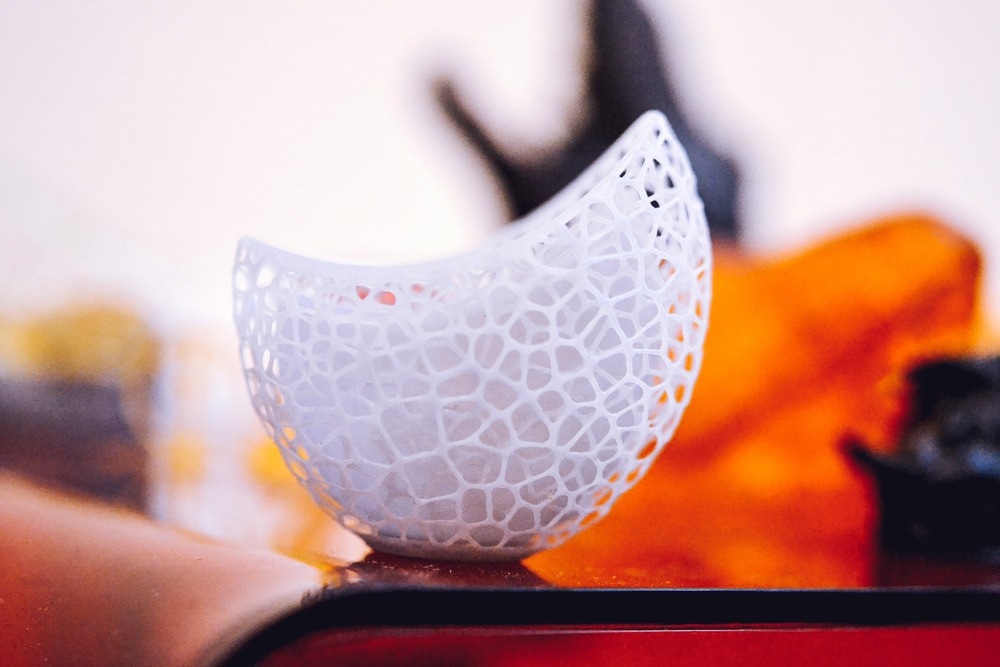Stereolithography (SL) employs UV-curable resin as a raw material to fabricate bulk and delicate objects. However, the poor performance of this resin restricts the SL’s practical applicability.

Study: Dual-Cure Vapor-Grown Carbon Nanofiber-Supplemented 3D-Printed Resin: Implications for Improved Stiffness and Thermal Resistance. Image Credit: MarinaGrigorivna/Shutterstock.com
In an article recently published in the journal ACS Applied Nano Materials, researchers prepared dual-cure three-dimensional (3D) printed SL resin nanocomposites supplemented with vapor-grown carbon nanofibers (SLR/VGCFs) to enhance the overall performance of printed workpieces and prevent nonhomogeneous curing.
The dual-cure nanocomposites supplemented with 1% weight-by-weight (w/w) VGCFs had a tensile strength of 63.5 megapascals and Young’s modulus of 3.2 gigapascals. The nanoindentation test confirmed that the dual-cure method helped achieve homogeneity of nanocomposites. The as-prepared nanocomposites had excellent thermal properties, indicating their stability in a high-temperature environment. The thermal conductivity of nanocomposites supplemented with 2% w/w VGCFs was increased by 79%.
Post-curing Methods in 3D Printing Technology
3D printing is an innovative and advanced manufacturing technology to fabricate customized stereoscopic objects with sophisticated architectures. SL is a 3D printing technique involving a vat polymerization process. It is used to generate versatile structures due to its inordinate-quality surface and high resolution.
SL technology utilizes UV-curable SLR as raw material. In the printing process, the fast-scanning speed of the laser light prevents the complete conversion of unsaturated moieties of the SLR, forming printed objects with deprived mechanical properties, which limits the application of the SL 3D printing at the desktop level.
Ultraviolet (UV)-assisted post-curing after the printing process can overcome the above limitations. This curing process increases the conversion rate of unsaturated moieties in the SLR and improves the mechanical properties. However, due to the poor absorption of UV light by SLR, the depth of UV light penetration is limited, restricting the UV post-curing in the interior parts of the object. Moreover, the non-transparent SLR further decreases the UV post-curing efficiency due to colored fillers in SLR.
To this end, an integration of UV irradiation in the printing process followed by thermal treatment can overcome the UV-post-curing challenges. The thermal post-curing has more advantages than UV post-curing since the former post-curing process has no limitations in terms of object geometry and can facilitate complete polymerization of the interior parts of the object.
Reinforcing the polymers with nanofillers is an innovative strategy, offering remarkable properties and improving the practical applicability of the polymers. VGCFs are nanofillers that exhibit superior properties like prominent thermal and electrical conductivities when reinforced into polymer matrices.
Dual-cure VGCF-supplemented 3D-printed Resin
In the present study, the researchers prepared a dual-cure SLR via an efficient and facile method of incorporating a suitable thermal initiator (TI) and comparing its efficacy with the conventional UV post-curing SLR. The VGCFs were acidified to increase the functional groups on their surface, thus enhancing their interfacial compatibility with the polymer matrix.
The acidified VGCFs immobilized with carboxyl groups were prepared and characterized using X-ray photoelectron spectroscopy (XPS) and Fourier transform infrared spectroscopy (FTIR). VGCF-based nanocomposites were fabricated using a desktop SL 3D printer, followed by thermal or UV post-curing treatments to obtain SLR-TI /VGCF and SLR/VGCF, respectively. The FTIR spectra of acidified VGCFs revealed characteristic peaks at 3440 and 1730-centimeter inverse, corroborating the carboxylic acid group’s hydroxyl (O-H) and carbonyl (C=O) stretching vibrations.
Furthermore, the XPS spectra showed oxygen (O) 1s peaks at around 533 and 976 electronvolts, confirming the acidification of VGCFs. The intensity of carbon (C) 1s peak around 285 electronvolts was slightly decreased compared to pristine VGCFs, suggesting the oxidation of acidified VGCF surface functional groups. Furthermore, a high-resolution XPS spectrum showed new peaks at binding energies of 287 and 288.6 electronvolts, corresponding to C-O and C=O groups.
The mechanical and thermal properties of the fabricated and cured VGCF-based nanocomposites were analyzed. The results revealed that VGCFs effectively improved the mechanical properties of the SLR-TI after the thermal treatment. Moreover, the thermal post-curing pure resin and its nanocomposites withstood 700 times their weight for 1 hour at 180 degrees Celsius without being damaged.
Conclusion
In summary, the researchers performed the 3D printing of SLR-TI /VGCF nanocomposites and characterized them. The thermal treatment as a post-curing method induced better mechanical properties and homogeneity in nanocomposites than UV-assisted post-curing. The acidified VGCFs improved the SLR-TI’s stiffness and increased tensile modulus and strength.
Dynamic mechanical analysis (DMA) showed that the thermal process treated SLR-TI/VGCF nanocomposites improved glass transition temperature (Tg), resulting in a shift to higher temperatures after the thermal-mediated post-curing. Heat distortion temperature (HDT) results confirmed that the fabricated nanocomposites subjected to thermal-mediated post-curing can be applied reliably in high-temperature environments.
SLR-TI with 2% w/w VGCFs had higher thermal conductivity (79%) than neat SLR. The present work discussed a versatile solution to perform SL 3D printing and fabricate high-performing nanocomposite objects, broadening the practical applicability of SL 3D printing.
Reference
Li, Y., Kankala, RK., Weng, Z and Wu, L. (2022). Dual-Cure Vapor-Grown Carbon Nanofiber-Supplemented 3D-Printed Resin: Implications for Improved Stiffness and Thermal Resistance. ACS Applied Nano Materials. https://pubs.acs.org/doi/10.1021/acsanm.2c01774









 Add Category
Add Category

